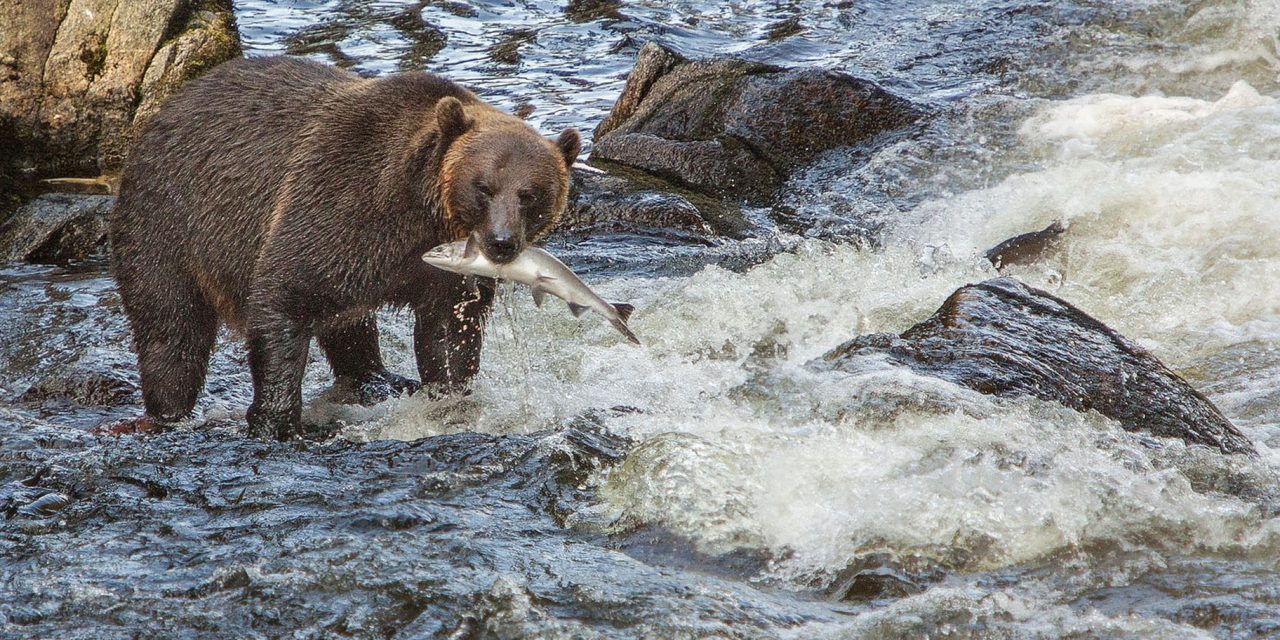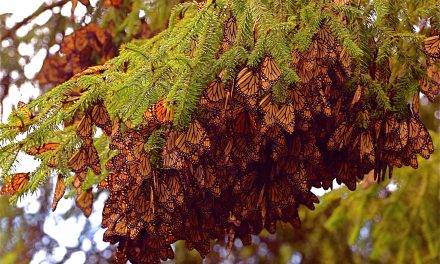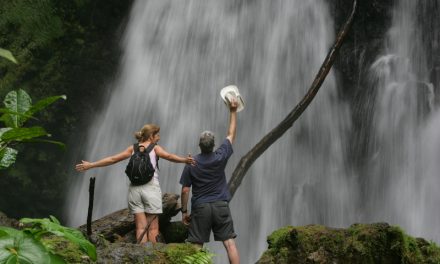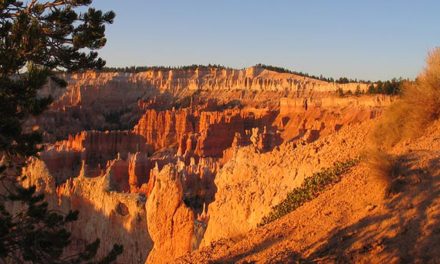Fat Bear Week recently announced the 2022 champion: 747 (aka “Bear Force One”). If you’re not familiar with this contest, it’s a competition where you can vote for the bear that you think is the fattest among those that arrive at Brooks Falls in Katmai National Park, Alaska, between June and September of each year to fish for salmon. As the salmon make the run up the Brooks River to their spawning spot, they travel on a difficult journey: they must swim upriver and then jump over Brooks Falls—a huge task. Hungry brown bears perch on top of the waterfall, diligently working on their own mission to fatten up as much as possible before winter arrives. Fat Bear Week is the annual tournament that celebrates the bears’ success in preparation for winter hibernation.
Tongue-in-cheek text on the Explore.org website, which covered the Fat Bear contest and asked that readers choose between the 747 and another one of the final contestants, 435 Holly, stated that “Brooks River ain’t big enough for the two of ‘em (in reality it is, but in this competition, it ain’t). On one side of the river, the incredible bulk 747 funnels fillets like a frequent flier. Farther downstream, the Queen of Corpulence, 435 Holly, is looking for a quick-draw comeback with her superfluous solidity. This ain’t their first rodeo.”
Despite all the fun and hoopla surrounding the bears every year, they’re not the only ones that compete for that rich run of salmon. People, too, depend on the fish. So, how do we share?

Brooks Falls in Alaska is one of the best places in the world to watch bears because early in the salmon run, the falls create a temporary barrier that the migrating fish must jump over. This results in a particularly successful fishing spot for the bears. ©Candice Gaukel Andrews
Putting bear needs first
When sockeye salmon return from the ocean and begin to move up the Brooks River to spawn, they’re very popular. Grizzly bears like to devour the fatty bellies and brains of fish they pluck from the water, a critical food source for them. Gulls feast on salmon carcasses that litter the riverbanks. For the Wuikinuxv Nation (pronounced “Oh-wee-key-no”) on the coast of British Columbia, Canada—which consists of approximately 300 people—the salmon are vital.
The traditional fishing grounds of the Wuikinuxv near Rivers Inlet—about 1,200 miles from Brooks Falls—once flooded yearly with as many as 3 million sockeye salmon. This annual migration made the fish central to the Wuikinuxv culture and diet. Human anglers from outside local communities prize sockeye salmon for their rich, dark-pink flesh, as well.
Fisheries managers are the ones who face the challenge of balancing the needs of salmon-dependent wildlife, local people’s livelihoods and ways of life, and commercial interests. Finding such an equilibrium can be difficult, given drastic declines in local salmon populations in the past several decades. The sockeye run at Rivers Inlet collapsed starting around 1970. In 1999, fewer than 10,000 sockeye salmon returned to spawn. Decades of fishing pressure from commercial fleets and warming ocean temperatures were prime suspects.

Here, a bear demonstrates the dash-and-grab fishing style, where a bear chases a fish and attempts to pin it to the river bottom with its paws. This technique is commonly used early in the salmon run; but because it is energetically costly, the method is quickly abandoned when the salmon begin to thin in numbers.
Today, however, the fishery has rebounded a bit, to an average of around 200,000 fish. There is no commercial fishery. Wuikinuxv anglers catch a small number of fish for ceremonial and subsistence purposes, only.
But the salmon remain a linchpin of the grizzly bear diet. Because it wasn’t clear how many fish people could catch before it took a toll on the bears, officials with the Wuikinuxv Nation teamed up with scientists from the Raincoast Conservation Foundation, a nonprofit, conservation science organization in British Columbia. They decided to take an unusual approach: instead of managing resources with human use as a focus, the ecosystem became the main priority. After all, when bears have enough to eat, local people and bears can continue to coexist peacefully, as they have strived to do for millennia.
Collecting bear hair for diet analysis
Knowing that the amount of salmon in bear diets influences the density of bears in an area, the research team began by analyzing salmon and bear dietary data from Wuikinuxv Nation-led research programs.

On days when many salmon are migrating in the Brooks River, a large, dominant, male bear will sometimes catch and eat more than 30 fish per day. Smaller bears that cannot compete for the best fishing spots, or bears that are less skilled at fishing, may catch and eat considerably less.
Over a span of seven years starting in 2013, Raincoast Conservation Foundation scientists in the company of Wuikinuxv Nation representatives collected tufts of hair caught in strands of barbed wire set around bait that attracted bears. A DNA analysis enabled 51 different grizzlies to be distinguished. Then, the hair was examined for molecules associated with different diets. Certain levels of carbon-13 and nitrogen-15 are a fingerprint for food that comes from the ocean, including sockeye salmon. The results showed that salmon made up nearly two-thirds of the bears’ diets.
Looking at the relationship between bear numbers and their diets, and the fluctuations in salmon numbers over the decades, the scientists calculated how many sockeye salmon the nation’s fishers could catch each year without causing a long-term depletion of the salmon run and without causing a major downturn in bear numbers. They found that in a typical year, limiting the catch to 45,000 fish—approximately 10 percent below the sustainable limit—would result in 10 percent fewer bears in the area than if the Wuikinuxv didn’t catch any fish at all. The findings were published in a paper in the science journal Marine and Coastal Fisheries in August 2021.
For the Wuikinuxv Nation members, catching 10 percent fewer fish while having 10 percent fewer bears was deemed acceptable. Also, the catch limit was higher than the 30,000-fish-catch target the nation now uses.

The Wuikinuxv Nation had a desire to find a balance between the needs of bears and those of people. The 10-percent trade-off honors the Wuikinuxv spirit of “nanakila,” which means to be a guardian.
In the past, it was rare to develop fishing targets in collaboration with Indigenous peoples and with an eye toward the needs of other animals. Fisheries often set the maximum limit that can be sustained over time with little consultation with native peoples. Hopefully, this new approach will be a model for other fisheries.
Adhering to the 10-percent solution
This study—and the agreement that resulted from it—shows that people and bears can share salmon without harming each other’s interests. The 10-percent trade-off is not only operable, but it honors the Wuikinuxv spirit of nanakila, which means to keep an eye on something or someone; to be a protector or guardian.
What also results is an illustration of how science can combine with the values of an Indigenous people to manage scarce natural resources. The people of the Wuikinuxv Nation know that if the sockeye salmon population dramatically rebuilds, a commercial fishery could reopen in Rivers Inlet. Balancing a catch that wildlife needs with a yield that local people require is a formula for success.
Here’s to finding your true places and natural habitats,
Candy



































